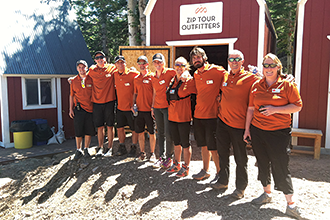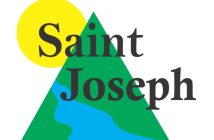Standards—ACCT, ASTM, and PRCA—remain a gray area for the industry. They serve as solid guidelines, but are required only by some state or federal jurisdictions. Michael Smith of Arbortrek, a provider of zip line canopy tours and adventure parks that operates in several states, says that only nine or 10 states currently mandate standards for adventure parks, though many manufacturer recommendations for training follow ACCT certification guidelines. Smith urges operators to use these as a reference.
No matter the training method, all emphasize, from a risk management perspective, the importance of logging training and training hours—a method of tracking that staff have received training, and when.
Tale of Two Operators
Colorado-based Vail Resorts, which offers aerial and adventure parks, including zip rides, zip tours and challenge courses, at four of its ski areas in Colorado, California, and Utah, trains 275 park employees a year via a mix of in-house and third-party instruction.
“We always start with a manufacturer’s recommendations for training,” says Barrow. “As Vail gains new activities, we use manufacturers to help develop our knowledge and experience in proper operations and training techniques.”
Once past that initial hump, Barrow—a former director of training and operations for Bonsai—says that Vail Resorts turns to its in-house training program, especially for activities they have a longer history with, like climbing walls, bungee tramps, and some zip lines.
“There are some things that can be conveyed by an operator that can’t be conveyed by a third party—that’s why we try to do a balance of both,” he says. “The vendor doesn’t always train on things that are important to us as a client… the care for the guest experience, the educational and emotional outcomes that we hope our guests get from their experience, the ways that we maintain throughput on the courses, and the area-specific lessons that we’ve learned from the time and experience that we have on these courses.
The advantages of in-house training,” adds Barrow, “are that the operator has a greater knowledge of how they want their operation to be different from the competitors. Another advantage is that operators have a better understanding of small nuances and safety concerns on their specific course.”

All with the program: Zip Tour Outfitters staff at Vail’s Canyons Resort, Utah.
Barrow emphasizes the importance of having the appropriate knowledge in-house to develop a proper training system. “You need to develop a solid curriculum that covers all the mandated and critical components to a safe operation,” he says. “It’s also important to make sure you have a system for checks and balances built in, so there isn’t complacency.”
Vail uses a stringent internal auditing process. “We find that’s important, because as one becomes comfortable with things, it’s easy to skip critical components,” says Barrow.
At Vail, this means a team member shadows all trainings and audits the performance of trainees at predetermined times throughout the season to ensure they’re doing their job properly. “By doing these audits, it’s easy for us to look at every person’s training independently, and more easily assess each individual,” says Barrow. “Out-of-house trainers don’t always see the bad habits.” In addition, a group of staff from each Vail Resort adventure park discusses accidents and near misses on a bi-weekly basis as part of a best-practices discussion.
Smith is also an advocate of operators getting outside perspective by forming a network within the industry. “One of the largest risk factors I see in the industry is isolationism. Accidents are occurring to operators and owners that never go [to other parks].” He recommends that all operators visit at least three other parks a year, and follow up each visit with a discussion with the operator to review ideas.
“It’s important to create a network of other sites, so you can review one another, and so you can interact with others to know what they’re doing,” he says. That applies to trainers as well as owners, builders, and consultants.






